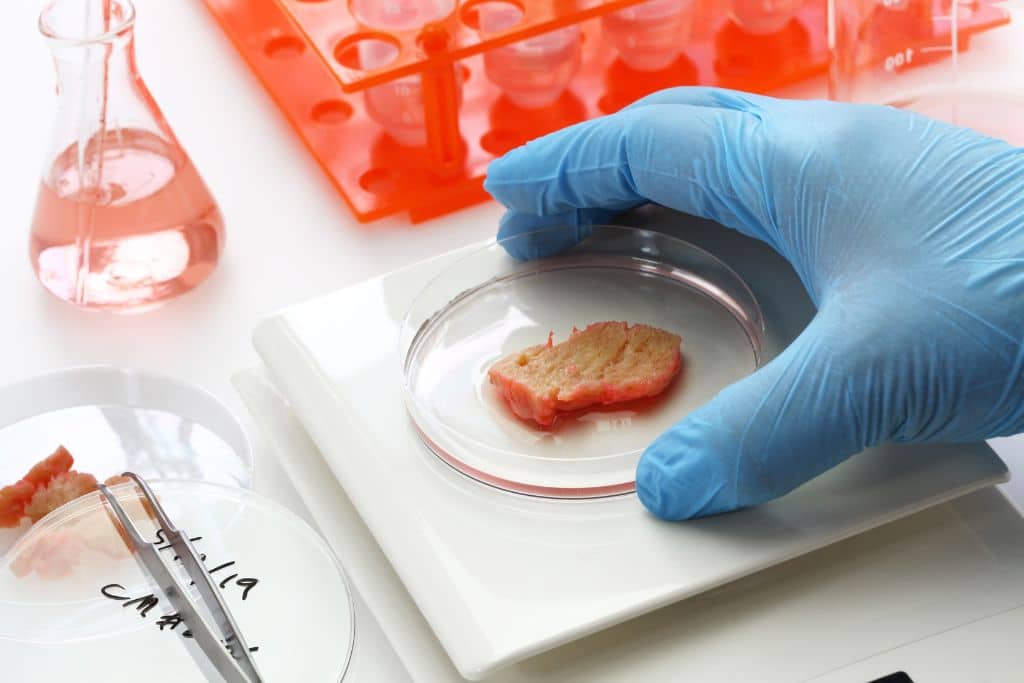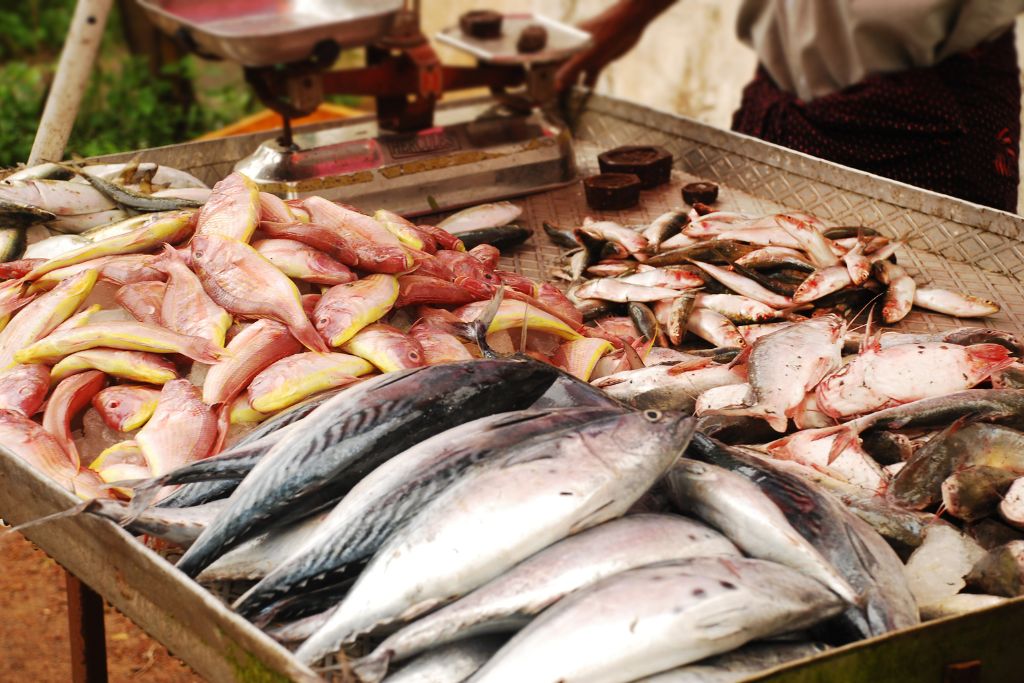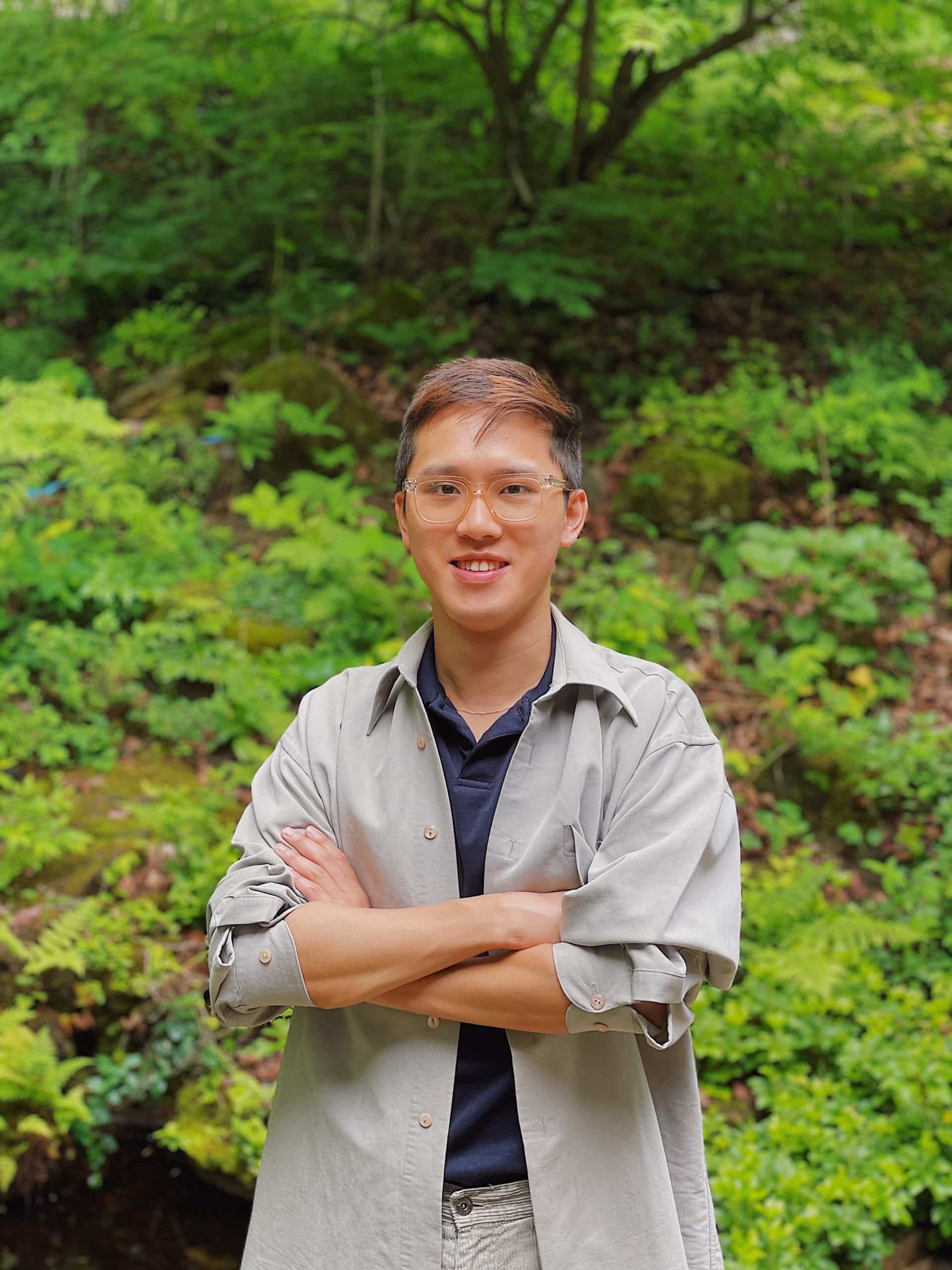According to the Food and Agriculture Organization (FAO) of the United Nations, there has been a consistent upward trend in worldwide seafood consumption over the last six decades. This growth is directly attributed to the expansion of both fisheries and aquaculture output, as well as the rising demand in the market. WildType, a San Francisco-based seafood company, is confronting this problem with its cell-cultivated salmon, which is grown in a pilot facility that claims to produce “the cleanest, most sustainable seafood on Earth”. But is lab-grown seafood really the future?
—
What Is Lab-Grown Salmon?
The cultivation of salmon derived from cellular sources is a novel advancement within the food sector, holding significant promise for transforming fish production methods utilised for human consumption.
Lab-grown salmon, otherwise known as “cultivated salmon” or “cell-cultured salmon”, is generated by the extraction of a small cell sample from a wild-caught salmon, followed by their cultivation within a bioreactor. The cells are supplied with essential nutrients under optimal circumstances to facilitate their maturation into fish tissue, thereby enabling their extraction and transformation into salmon fillets or other related commodities.
This advent of lab-grown salmon emerged as a solution to address the adverse ecological consequences associated with conventional salmon aquaculture practices, and the depletion of wild salmon populations due to excessive fishing. According to studies conducted by NASCO (North Atlantic Salmon Conservation Organization), the population of wild North Atlantic salmon had a 50% reduction from 1983 to 2022. Additionally, approximately 90% of marine fish populations worldwide are either depleted, overfished, or completely exploited.
The cultivation of salmon in laboratories presents a viable and ecologically responsible substitute for conventional salmon aquaculture practices.
You might also like: Global Fishing Watch: Raising Awareness of the Impacts of Overfishing
This cellular farming of salmon began its infancy at Wildtype, a San Francisco-based company that pioneered this new wave of lab agriculture.
According to Aryé Elfenbein, a molecular researcher and co-founder of Wildtype, it has been determined that cell-cultured fish do not contain any drugs, heavy metals, or microplastics, which leaves the final product to be just the consumable parts of the fish. Wildtype reports that their product achieves maturity within a relatively short period of four to six weeks, in contrast to the lengthier timeframe of two to three years often observed in conventional aquaculture practices.
According to David Kaplan, a biological engineer at Tufts University in Boston, the widespread popularity of salmon renders it an intriguing subject for the exploration of alternative options. The diverse array of potential goods from this practice, ranging from fish cakes to salmon fillets, presents several chances for innovation. Kaplan states that the long-term price competition between cultivated fish products and farmed fish remains uncertain. However, he foresees a potential fall in the price of cultivated fish as enterprises expand their operations.
The Process
Let’s dive a little deeper into how exactly edible salmon is “grown”, according to Wildtype’s practice.
A tiny sample of cells is first removed from a natural, biological salmon. Once these initial cells have been extracted, they can be stored and used repeatedly. These cells are placed in a bioreactor that is similar to those steel fermentation containers used to produce beer or kombucha, to which a mixture of sugar, lipids, proteins, electrolytes, minerals, and other nutrients is given to the cells to promote their growth. The cells are then inserted in a plant-based structure scaffolding (basically three-dimensional plant-based structures) that directs their development into salmon flesh.
“At the cellular level, the DNA of a Wildtype salmon is identical to the DNA of a conventional salmon,” said Elfenbein.
For a chef preparing the fish or a consumer consuming it, this correlates to a piece of fish with nearly the same texture and nutrient profile as a traditional fish. The visual and gustatory resemblance between Wildtype salmon and “traditional” salmon is mostly attributed to the similarity in their cellular-level DNA composition.
“It is comparable to conventional fish in terms of fat content, omega-3 fatty acid content, and protein content,” explained Elfenbein. Equally essential, however, is the absence of antibiotics, heavy metals, toxins, microplastics, and other contaminants typically found in traditional wild-caught or farmed fish.
Is Lab-Grown Seafood Really Sustainable?
In addition to its purported status as a more sustainable protein source, cultured fish is designed to tackle many distinct challenges, such as overfishing, ocean pollution, and climate change.
While aquafarms – including fish farms situated in marine environments or on terrestrial grounds – have arisen as a potential solution to mitigate these challenges, they also give rise to distinctive and disconcerting complications pertaining to serious pollution, illness prevalence among fish populations, and the extensive use of antibiotics. These can be fully avoided with lab-grown products.
Finless Foods, a cultured seafood enterprise that has successfully secured US$25 million in funding thus far, posits that the cultivation of seafood plays a pivotal role in addressing the issue of ocean pollution. According to Michael Selden, CEO and co-founder, the greater the number of customers who consume cell-cultured and alternative seafood, the higher the likelihood of accomplishing our objective of establishing a future for seafood that promotes the flourishing of the ocean.
You might also like: 5 Sustainable Plant-Based Seafood Companies Leading the Way
The Drawbacks of Lab-Grown Seafood
Among agricultural and biological scholarship, there is expressed scepticism over the efficacy of fake fish or meats in addressing the dual goals of environmental sustainability and improved public health.
With little access to comprehensive data about the nutritional composition and comparative sustainability of plant or cell-based meals in relation to their livestock-based counterparts, many remain unconvinced of their efficacy in addressing climate change.

One of the inquiries posed by Eric Muraille, a biologist affiliated with the Université Libre de Bruxelles in Belgium, pertains to the ecological implications associated with the sterilisation process of stainless-steel culture tanks, which is employed to prevent bacterial contamination of cell cultures at companies such as Wildtype. Muraille drew a comparison between laboratories where cell cultures are conducted and the meticulously regulated and hygienic “clean rooms” commonly seen in the pharmaceutical sector, which presents other environmental issues. Available data suggests that the carbon footprint of the pharmaceutical business may be 55% greater than that of the automobile industry.
In an essay entitled “Potential Drawbacks of Cultured Meat” published in The Conversation in November 2019, it is stated that animals have an inherent immune system that serves as a defence mechanism against bacterial and other types of illnesses. Contrary to the situation observed in cell culture, bacteria exhibit a significantly higher rate of proliferation compared to animal cells when subjected to a nutrient-rich milieu. In order to mitigate the presence of bacteria surpassing the quantity of meat in a steak, for example, it is imperative to prevent contamination, necessitating a rigorous adherence to sterility protocols.
Kolbeck has recognised the necessity of doing a Life Cycle Analysis (LCA) to assess the ecological consequences associated with their product. This undertaking aims to provide consumers with an objective evaluation of the sustainability of their offering.
How Long Does it Take to Develop?
The pace of lab-cultured seafood operations is sluggish. In two years’ time, companies like Wildtype’s only output remained limited to salmon.
According to Kolbeck, the current pilot plant at Wildtype possesses a production capacity that can be described as “modest.” However, the firm is now in the process of establishing larger facilities in expectation of obtaining developmental permission from the US Food and Drug Administration (FDA). It is projected that similar enterprises will require around another decade to attain industrial-scale manufacturing.
Is It Plant-Based?
According to Margaret Lovallo, the manager of the studio, several members have expressed a strong interest in acquiring a clear understanding of the term “cultured salmon.” The individual characterised the fish as bearing resemblance to “Beyond Beef,” a lab-grown product, however, there was uncertainty among the participants regarding the salmon’s classification as vegetarian from a technical standpoint.
Impact on the Fisheries Industry
In addition to Wildtype, several startups in Silicon Valley have also attracted significant investment in this particular domain. BlueNalu secured funding of US$60 million in the previous year, and Finless Foods received a substantial investment of $34 million in March. Both companies have intentions to manufacture cell-cultured bluefin tuna in the near future, a species that was formerly classified as endangered until its population started to show signs of recovery in the past decade.
According to Kate Krueger, a prominent cell biologist and the founder and CEO of Helikon Consulting, an esteemed consultancy business specialising in new food products, there has been a significant and quick expansion in the market for cultured proteins over the course of the last five years. Companies such as Impossible Foods have played a significant role in establishing customer receptiveness towards innovative goods, particularly in the realm of plant-based burgers and sausages that closely resemble the appearance, flavour, and texture of actual meat.
In terms of market, a potential approach for cultured fish products to consider is a phased implementation strategy, similar to the one employed by Impossible Foods. This strategy involves initially introducing the goods at upscale restaurants, followed by their expansion into popular burger chains, and eventually making them available in supermarkets worldwide.
Wildtype’s sushi-grade fish fillet will have more stringent criteria for approval compared to an “unstructured” minced product such as a burger. Consumers may have high expectations regarding the level of safety associated with these items.
Lab-grown products also opened up doors for composite goods, which combine plant-based and cell-cultured proteins into new edible products. These are expected to save expenses while still providing customers with the desired flavour and texture.
Wildtype is currently driven by the objective of establishing its product as the first farmed seafood offering in the market, while concurrently prioritising the overarching aim of alleviating the strain on fish populations in the long run. If the current trend persists, it is possible that by 2030, a critical threshold may be reached for several fish species, beyond which recovery becomes quite unlikely.
Final Thoughts
The artificial cultivation of salmon holds promise as a feasible and environmentally sustainable substitute for conventional salmon aquaculture. Despite the existence of some limitations, such as production expenses and the need for regulatory authorisation, the advantages associated with cultured salmon, such as its uniformity, taste, and ecological viability, render it a highly promising advancement within the realm of food production.
With advancements in technology and increased accessibility, it is plausible that technology might assume a significant role in offering a sustainable and ethically sourced protein supply for forthcoming generations.
You might also like: Plant-Based Seafood Might Be More Popular Than You Think


















